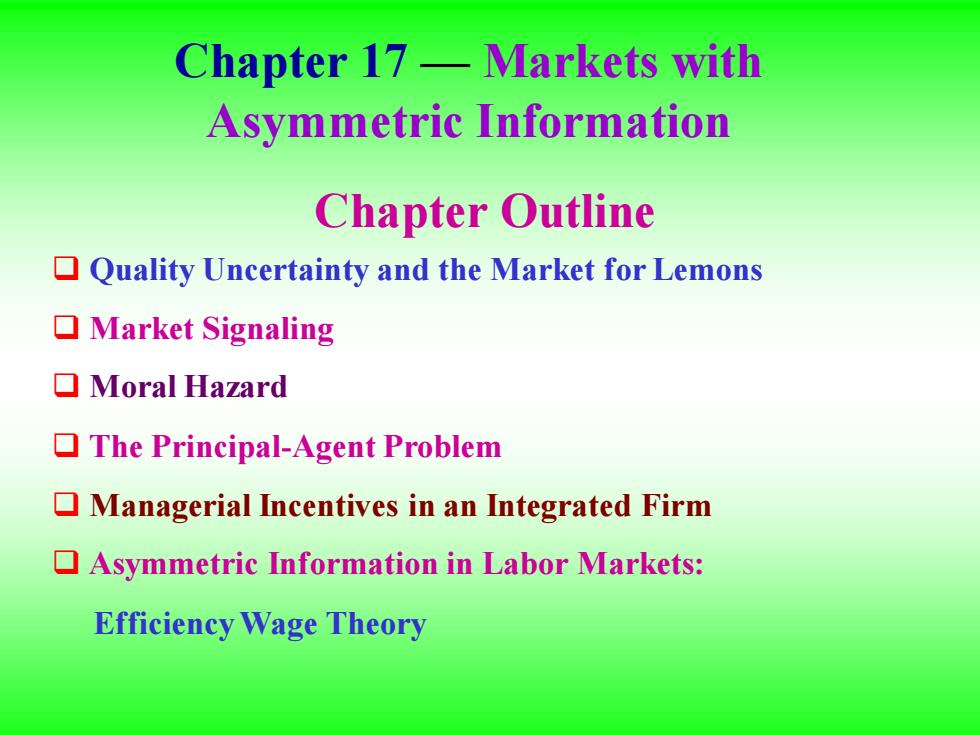
Chapter 17-Markets with Asymmetric Information Chapter Outline Quality Uncertainty and the Market for Lemons ▣Market Signaling ▣Moral Hazard The Principal-Agent Problem Managerial Incentives in an Integrated Firm Asymmetric Information in Labor Markets: Efficiency Wage Theory
Chapter 17 — Markets with Asymmetric Information Chapter Outline ❑ Quality Uncertainty and the Market for Lemons ❑ Market Signaling ❑ Moral Hazard ❑ The Principal-Agent Problem ❑ Managerial Incentives in an Integrated Firm ❑ Asymmetric Information in Labor Markets: Efficiency Wage Theory
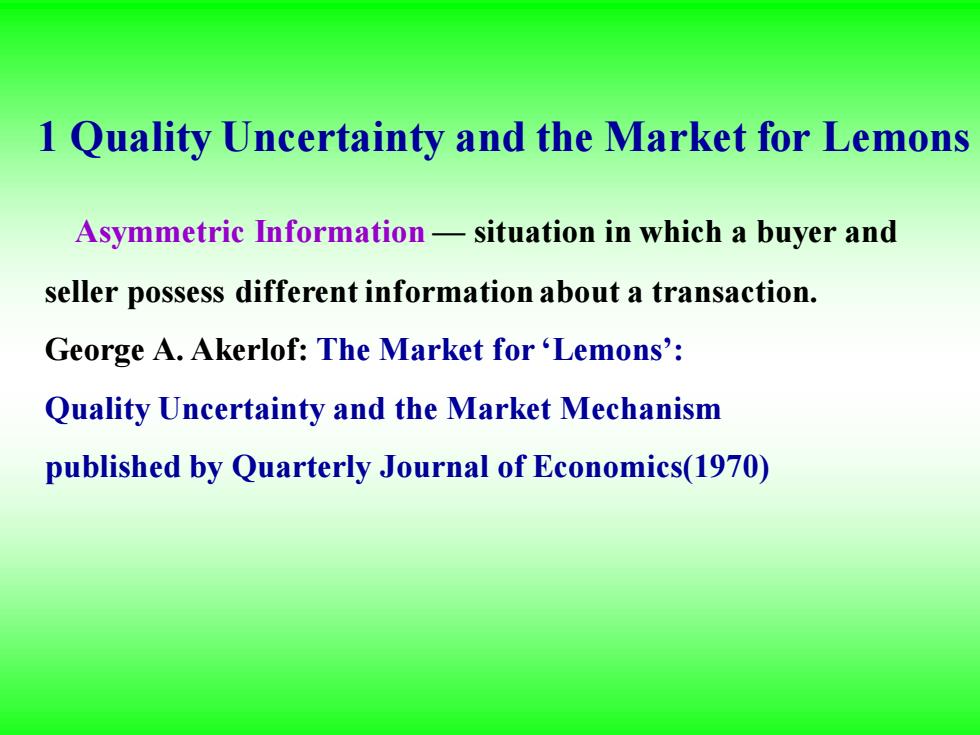
1 Quality Uncertainty and the Market for Lemons Asymmetric Information-situation in which a buyer and seller possess different information about a transaction. George A.Akerlof:The Market for 'Lemons': Quality Uncertainty and the Market Mechanism published by Quarterly Journal of Economics(1970)
1 Quality Uncertainty and the Market for Lemons Asymmetric Information — situation in which a buyer and seller possess different information about a transaction. George A. Akerlof: The Market for ‘Lemons’: Quality Uncertainty and the Market Mechanism published by Quarterly Journal of Economics(1970)
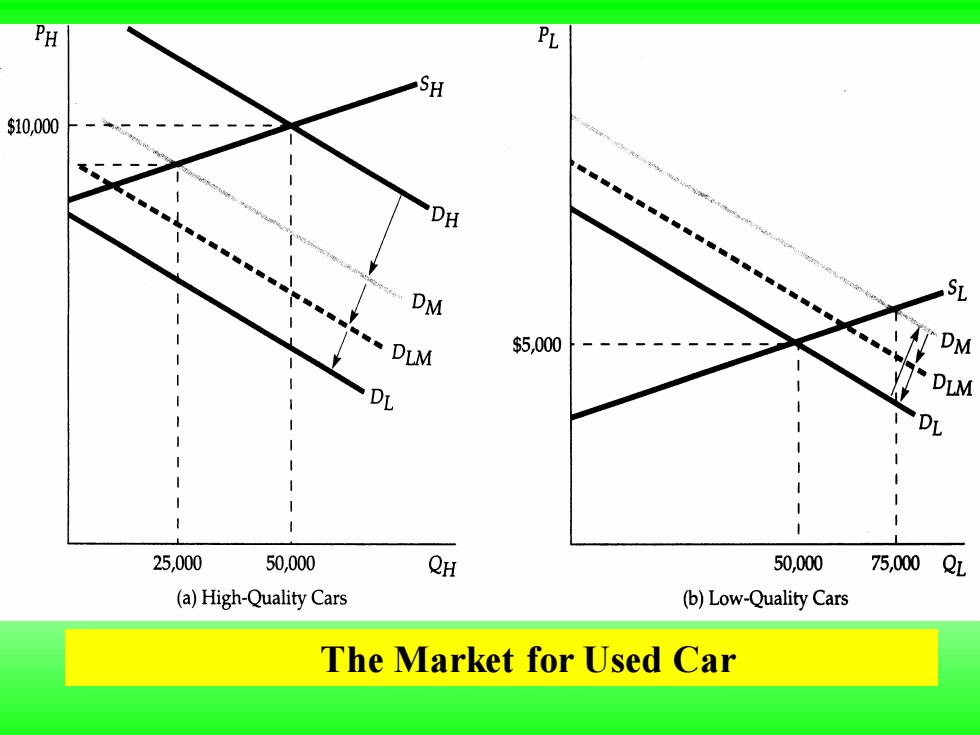
PH SH $10,000 DH DM $5,000 PL DLM 25,000 50,000 QH 50,000 75,000QL (a)High-Quality Cars (b)Low-Quality Cars The Market for Used Car
The Market for Used Car
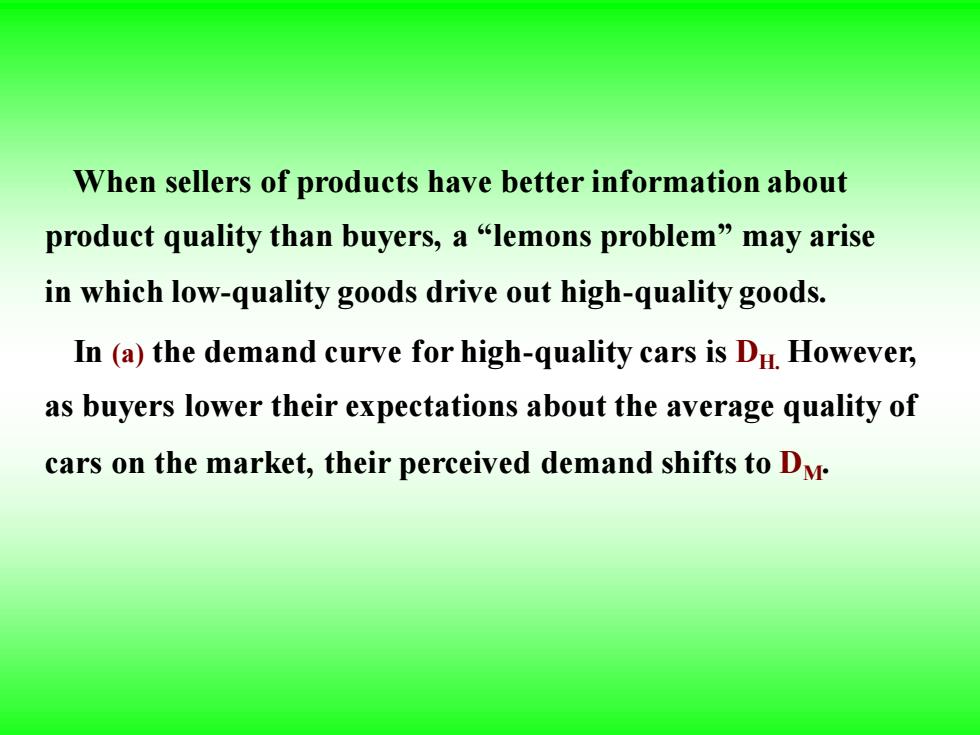
When sellers of products have better information about product quality than buyers,a "lemons problem"may arise in which low-quality goods drive out high-quality goods. In (a)the demand curve for high-quality cars is DH.However, as buyers lower their expectations about the average quality of cars on the market,their perceived demand shifts to Dv
When sellers of products have better information about product quality than buyers, a “lemons problem” may arise in which low-quality goods drive out high-quality goods. In (a) the demand curve for high-quality cars is DH. However, as buyers lower their expectations about the average quality of cars on the market, their perceived demand shifts to DM
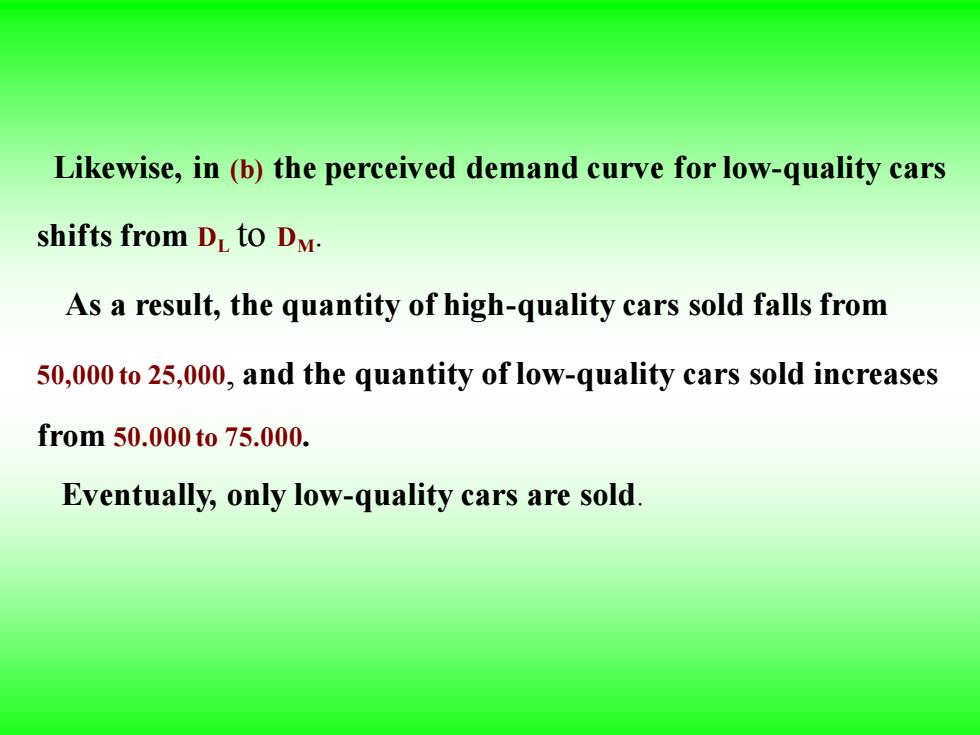
Likewise,in (b)the perceived demand curve for low-quality cars shifts from DL to DM. As a result,the quantity of high-quality cars sold falls from 50,000 to 25,000,and the quantity of low-quality cars sold increases from50.000to75.000. Eventually,only low-quality cars are sold
Likewise, in (b) the perceived demand curve for low-quality cars shifts from DL to DM. As a result, the quantity of high-quality cars sold falls from 50,000 to 25,000, and the quantity of low-quality cars sold increases from 50.000 to 75.000. Eventually, only low-quality cars are sold